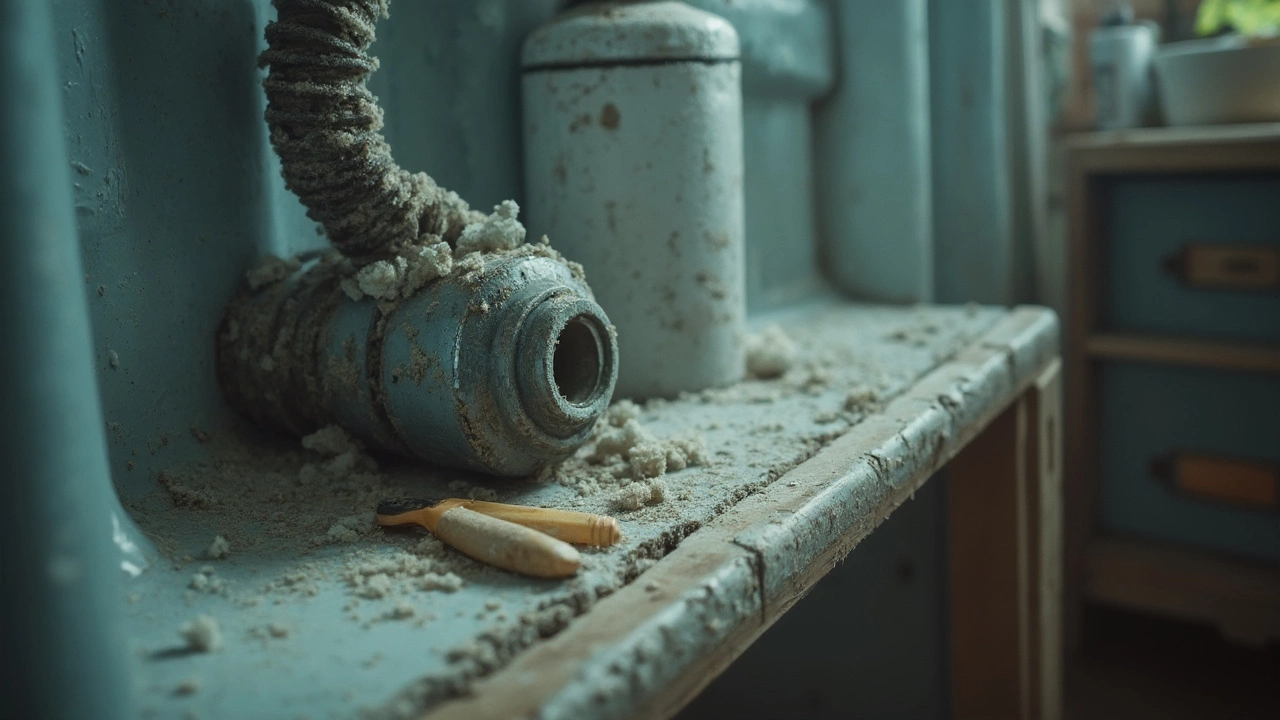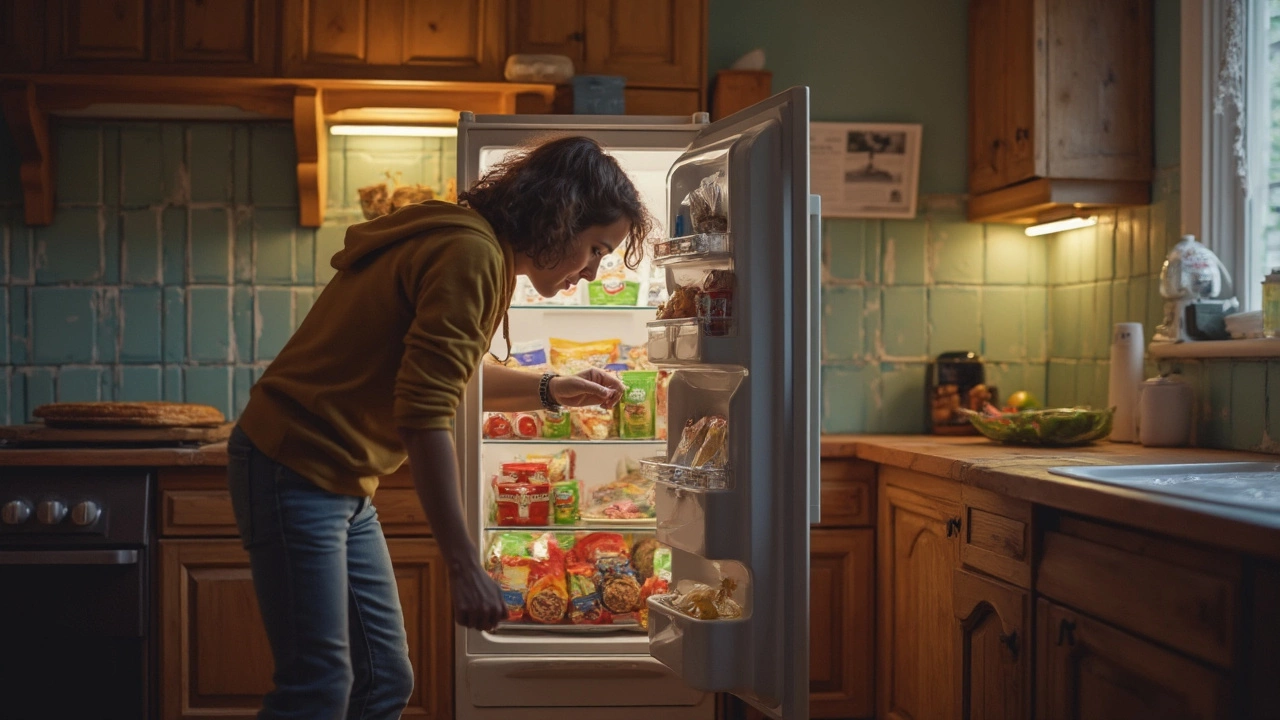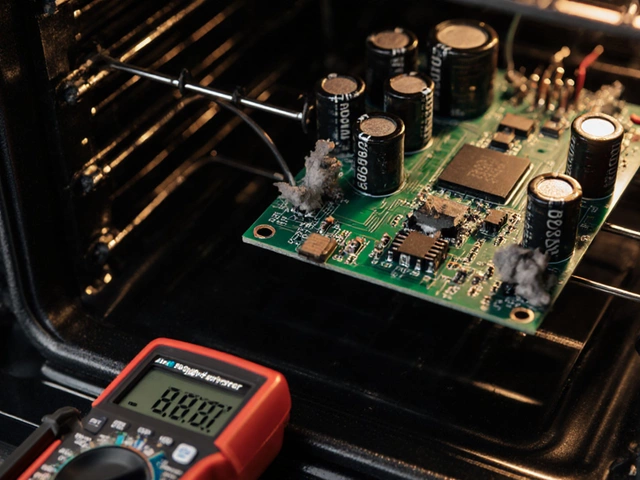So, your freezer's thrown a tantrum and quit cooling—just when you thought everything was under control. Sounds familiar? First thing, take a deep breath. You’re not alone. This is one of those household hiccups that can sneak up out of nowhere. Before you get into panic mode, let’s chat about why your freezer might have gone on strike and what you can do about it.
First off, check if the thermostat decided to play tricks. Often, it's accidentally set too high, or worse, it just went kaput. Adjust it and give it a few hours; sometimes it’s just that simple. If not, you might want to peek at those condenser coils. They collect dust like a magnet, and if they're clogged, it’s like trying to breathe through a straw.
If you're the hands-on type, there are a few DIY tricks before making that call to a repair guru. Trust me, sometimes a little troubleshooting on your own can save heaps of cash and hassle. But, if you’re getting nowhere fast, don’t fret. We’ve got tips on when it’s time to wave the white flag and summon the experts.
- Common Causes of Freezer Malfunctions
- DIY Diagnostic Tips
- When to Call a Professional
- Managing Food Safety Without a Working Freezer
Common Causes of Freezer Malfunctions
When your freezer suddenly decides not to freeze, it’s usually not a mysterious force at play. Often, it boils down to a few common culprits. Understanding these can help you troubleshoot and maybe even fix the issue yourself.
First on the list is the thermostat. If this little gadget isn’t set right or has gone bad, your freezer won’t know it’s supposed to keep things cold. So, grab a flashlight and check if it's in the correct position. Also, give that dial a little nudge; sometimes it just needs a wake-up call.
Next up are the condenser coils. Dust and grime can build up over time, making it hard for your poor freezer to cool efficiently. Cleaning these coils can often do wonders. Just unplug the unit, grab a vacuum hose, and tidy things up. Works like magic sometimes!
Don't overlook the door seals, either. These rubber gaskets need to be in top-notch shape to keep the cold air in. If you notice cracks or gaps, they might be the reason your freezer is struggling. Test it with the dollar bill trick: close the door on a bill and try to pull it out. Easy peasy, right? If it slips out easily, the seal might not be doing its job.
Sometimes, the problem lies with the evaporator fan. This fan circulates air to keep temps even. If it’s busted, you can bet your bottom dollar that your freezer will be too warm. Listen for strange noises or silence—no sound might mean the fan's not working.
If you’re the kind who loves numbers, here’s a little trivia: Nearly 90% of freezer issues stem from these basic problems. A quick look and some minor fixes at home can sometimes solve them without needing professional repairs.
DIY Diagnostic Tips
Alright, if your freezer’s still acting stubborn, it’s time to roll up those sleeves and get to diagnosing. No need for fancy tools—just some curiosity and a bit of patience. Let's hit the ground running.
First things first, unplug your freezer. Safety is paramount here. Once you’ve ensured it’s good and disconnected, we can dive into inspection mode.
- Thermostat Check: Make sure the temperature dial is set correctly. It can sometimes be bumped to a warmer setting, creating your frosty issues. If tweaking it doesn’t change anything after a few hours, the thermostat may be faulty.
- Condenser Coils: These bad boys are usually at the back or bottom of your appliance. Give them a lookover. Are they dressed in a layer of dust or grime? Grab a vacuum or a soft brush and give them a thorough cleaning.
- Door Seal: Check the freezer door gasket. A simple test involves shutting a piece of paper in the door. If you can easily pull the paper out, your seal might be letting cold air escape. Consider replacing the gasket if necessary.
- Evaporator Fan: Sometimes the evaporator fan, which circulates air, is the culprit. If your freezer is making unusual noises or is too quiet, the fan might not be running properly. It should spin freely without obstruction.
These tips cover the basics but offer powerful insights into where things could be going wrong. Remember, if you’re unsure about any of these steps or don’t see improvement, it might be time to reach out to a professional for freezer repair help. Fixing these issues yourself not only saves money but also helps keep your cold storage back in full swing.
If you're interested in some fun facts, here's a quick glimpse at appliance troubleshooting:
| Issue | Typical Cause | DIY Success Rate |
|---|---|---|
| Freezer not cold enough | Thermostat issues | 60% |
| Unusual noise | Faulty fan | 50% |
| Frost buildup | Poor door seal | 70% |

When to Call a Professional
So, you're wrestling with a freezer repair issue, and your trusty Google skills haven't saved the day. Sometimes, facing a rebellious freezer isn’t a one-person job, and that's when calling in a pro is the best move. But how do you know it's time? Here’s the lowdown.
If your freezer is making odd noises—or worse, silent yet non-functional—it might indicate a compressor problem. Compressors aren't for the DIY faint of heart. They’re the beating heart of your freezer, and messing around with them without know-how can do more harm than good.
Another telltale sign? You've got puddles. Is water playing with your toes when you open the freezer? This could mean a door seal problem or a defrost drain that requires more expertise than a simple clean-out.
Here's a quick checklist of when to pick up the phone:
- The freezer isn't cooling after all basic checks.
- Noticeable electrical smell or visible sparks.
- Water leaks persist despite DIY efforts.
- Strange noises, especially if they start suddenly.
- Ice buildup that won’t go away.
Steve Fisher, a well-regarded appliance technician in Auckland, says,
“If you find yourself fixing the same issue over and over, let it go. Professional help doesn’t just fix the issue; it diagnoses the root cause to ensure long-term solutions.”
In some situations, calling a pro isn't just about convenience. It can be a safety measure. Messing with electrical components isn’t anybody's idea of fun—at least, it shouldn’t be.
Besides, a certified expert can often spot issues you wouldn't even think to look for. It might cost a bit more upfront, but handling a problem efficiently the first time can save money—not to mention frozen goods—in the long run.
Managing Food Safety Without a Working Freezer
Okay, your freezer's out of action, and you've got a mountain of frozen food to deal with. It's like a ticking clock running out before things start to spoil. The good news? There are some tricks to keep your food safe until you're back in the chill zone.
First off, it's time to prioritize. Figure out which foods are the most perishable. Typically, meat, seafood, and dairy need to stay cool. You can transfer these to the fridge if there's space, since it’ll keep them fresh longer. If your fridge is jam-packed, consider getting a cooler and loading it up with ice packs or bags of ice. This helps extend the cold life till you sort the freezer out.
Another tactic is grouping frozen goods together. The idea is that items huddled close hold their chill longer. It’s like when you’re trying to keep warm on a cold day by standing close to someone.
If you're short on storage space, you could cook some of your meat and other perishables. Cooked food tends to last longer than raw and it’s easier to store in the fridge. You might get away without losing everything!
- Refreezing? A lot of folks ask if they can refreeze thawed food. The golden rule: if your food is still at refrigerator temperature—colder than 4°C—it’s generally okay to refreeze once your freezer’s back up.
- An emergency? For persistent freezers that refuse to cooperate, see if a friend or neighbor can temporarily store your particularly delicate items.
Keep in mind that some data suggests everyday Auckland temperatures hover around 15°C in April, which can be a mixed bag for food safety without refrigeration. Always err on the side of caution. Using a thermometer can help check whether your food stayed safely cool.
Aside from saving what food you can, make sure you’ve got a solid plan for repairs or replacements. If this fiasco is turning into a regular occurrence, it might be time to think about investing in a reliable appliance. So, while you're grappling with the practicalities of a non-functional freezer, keep your eyes on the prize: safe food and peace of mind.





